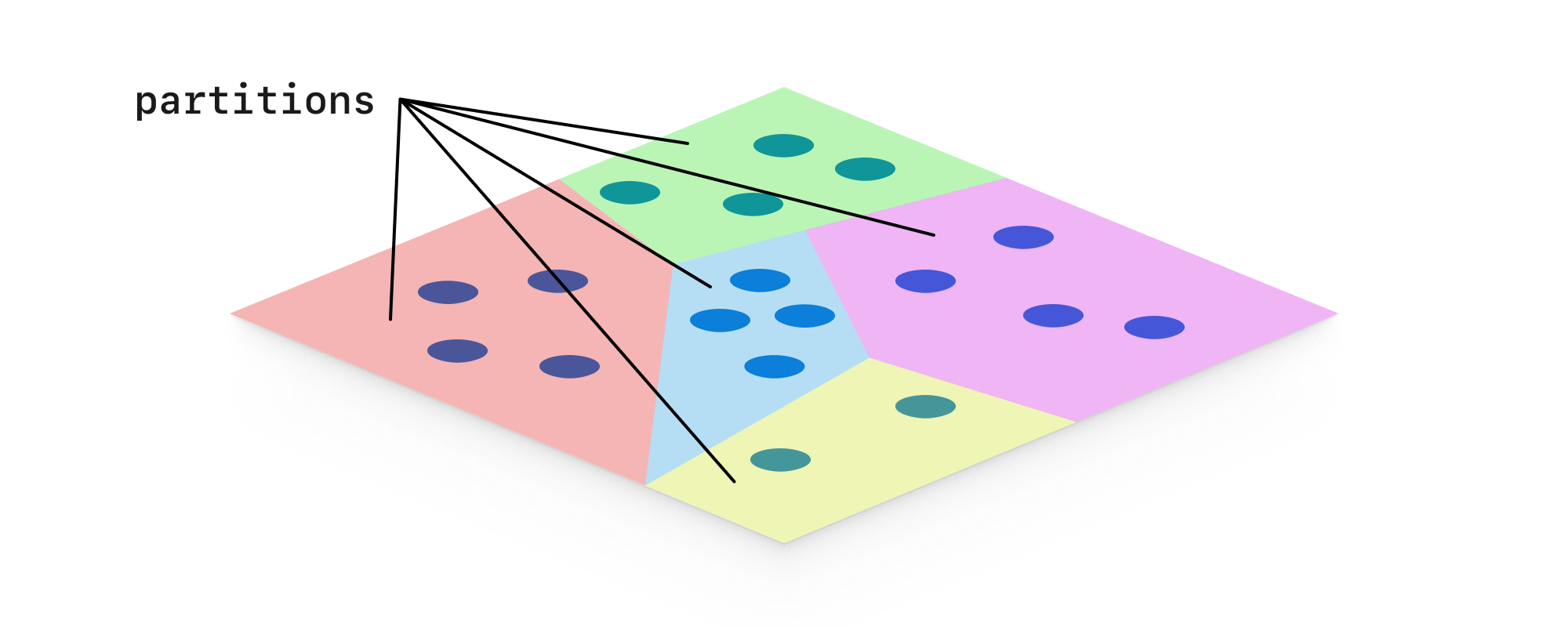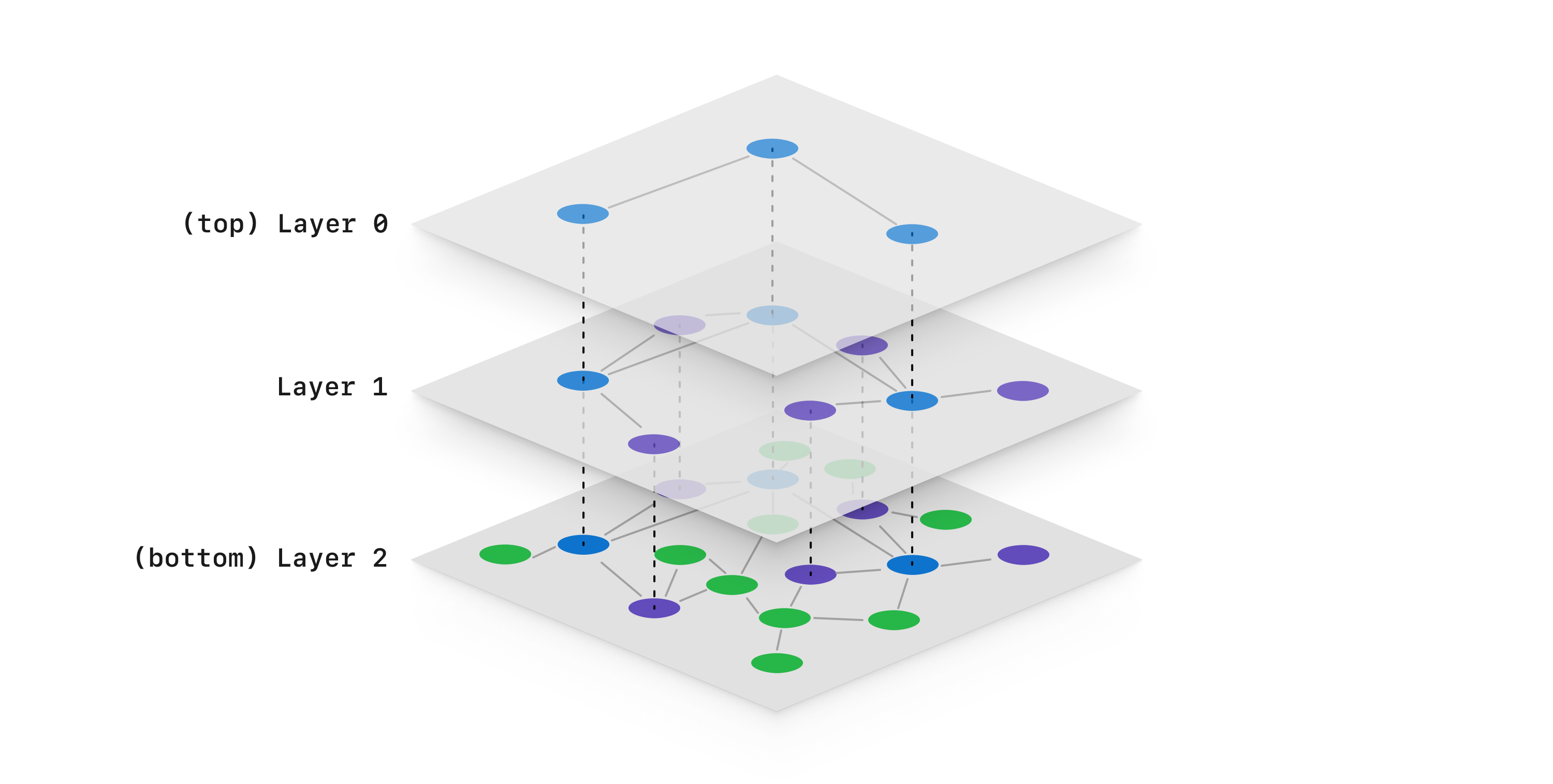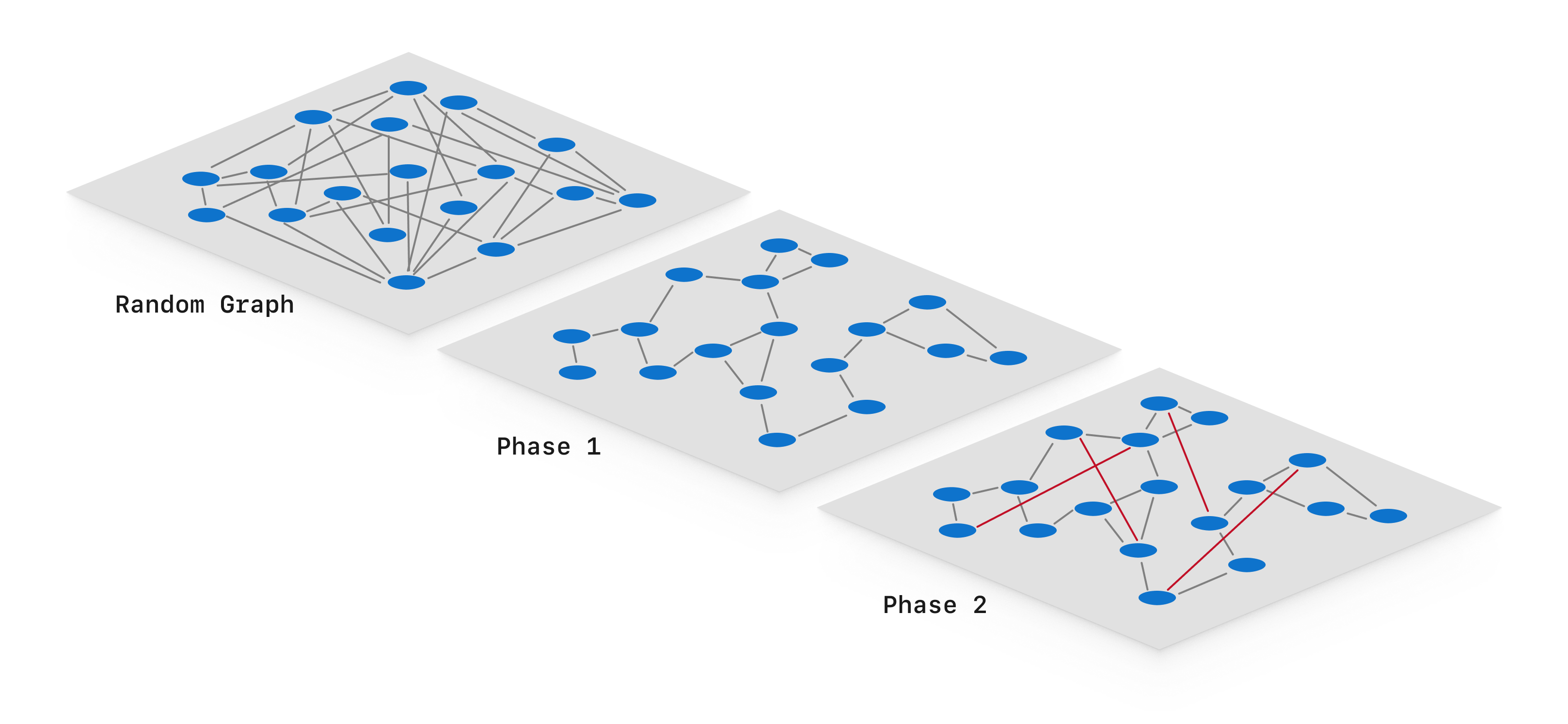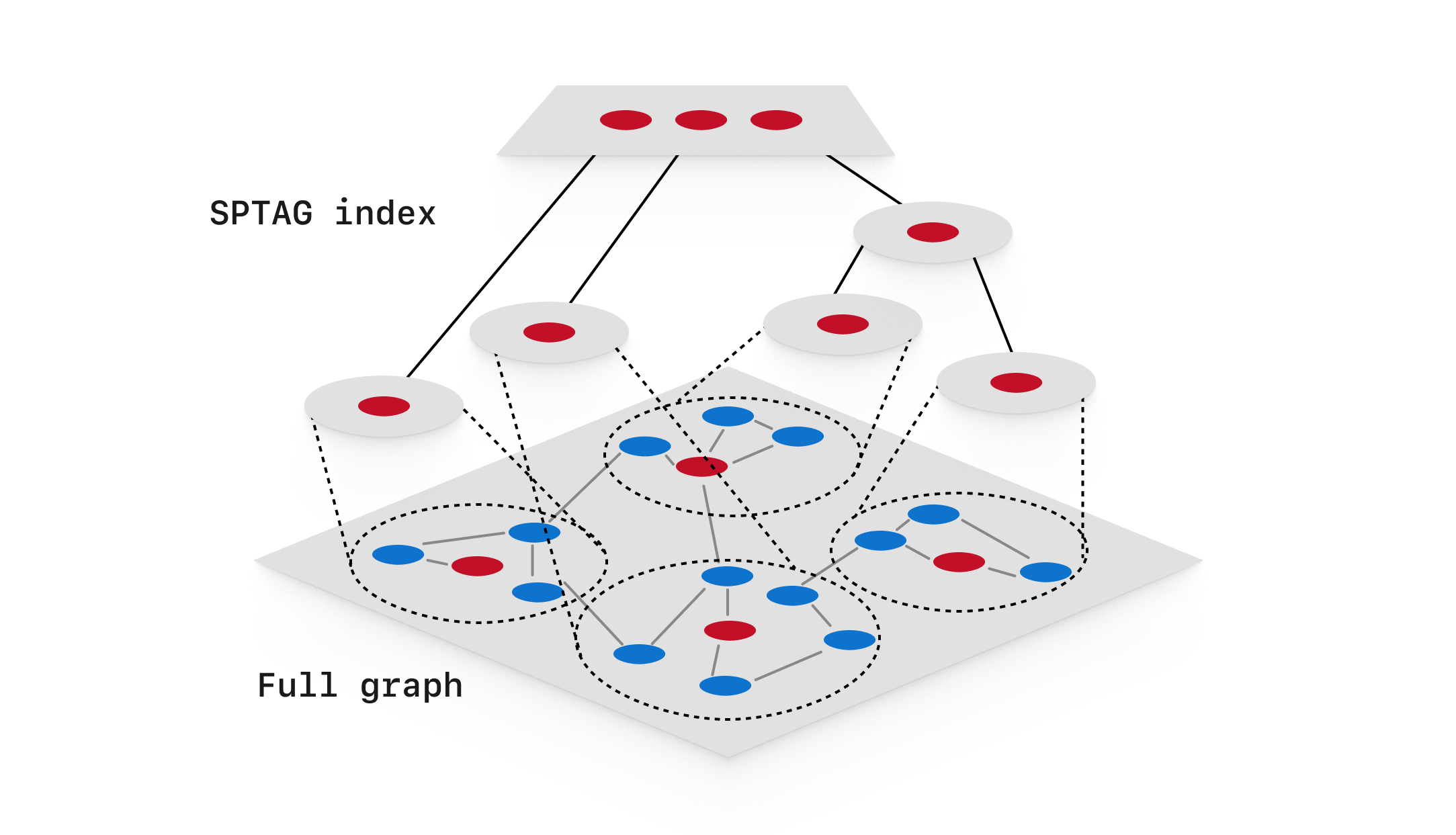General terminology
Common terms used when discussing vector databases and indexes.Vector (Embedding)
Vectors (more specifically, Embeddings) are a data structure that captures opaque semantic meaning about something and allows a database to search for resources by similarity based on this opaque meaning. As a data type, a vector is just an array of floating-point numbers. Those numbers are generated by submitting some resource — a word, a string, a document, an image, audio, etc — to an embedding model, which converts the resource to a vector.K-Nearest Neighbors (KNN)
KNN refers to the K-Nearest Neighbors to some point P in a high-dimensional space. With vector databases, we sometimes want to store millions or billions of high-dimensional vectors. A common query on a vector database is to find the other vectors in our data set that are similar to some input search vector. If the vectors are embeddings generated from an AI model, two vectors being similar (or near each other) in the high-dimensional space means that they have similar opaque meaning. We can ask the vector database to give us the 100 closest vectors, which is a form of KNN search, where K = 100.Approximate Nearest Neighbors (ANN)
ANN It is similar to KNN, but instead of finding the exact K closest neighbors to some vector, we instead look for the approximately K closest neighbors in the high-dimensional space. This means that we might miss some of the actual closest neighbors. However, if we relax our requirement and use ANN instead of KNN, we can often get significant performance improvement using specialized vector search indexes, which are further discussed later on this page. We measure how good a job an algorithm does at producing nearest neighbors with ANN via a measure known as recall.Recall
In the context of ANN search, the recall is the percentage of the actual nearest neighbors found in an ANN search. For example, say that we are performing a search on a large set of vectors and want to get the nearest 100 neighbors. If we perform KNN search, this will give us the exact 100 top searches. Instead, we may perform ANN search. If that ANN search returns 95 of the actual top 100 and then 5 results that are outside of the top 100, we would say the recall is 95%. If instead it returned 80 of the actual top 100 and then 20 results outside, we say the recall was 80%. Most vector indexes provide ANN search. Ideally, we’d like to perform these searches with high recall. Often, there is a trade-off between speed and recall %.Quantization
Quantization is a technique for compressing a vector into a more compact representation. Many vector indexes use quantization to compress the vector data stored in the index to reduce its memory and disk footprint. Sometimes, the full vector representation will still be stored somewhere on disk, and sometimes only the quantized vector will be stored. With PlanetScale, the SQL table always stores the full, original vectors, and the index stores half-precisionbfloat16 values by default. You can use the different quantization options when creating a vector index to use other quantized formats or disable quantization entirely.
Fixed Quantization
Fixed Quantization is one of the simplest ways to quantize a vector, because it is stateless and does not require any training data: all the elements of the vector are compressed into a smaller datatype (e.g. from float32 to float16, or all the way down to a single bit).Product Quantization (PQ)
PQ is a learned algorithm for compressing a vector into a more compact representation. Unlike fixed quantization methods, it requires an existing vector dataset to “train” before it can be used.Types of search algorithms and indexes
There are many algorithms and indexes that have been developed over the years, each with their strengths and weaknesses.Brute-force search
Brute-force search on an vector data set for nearest neighbors is one that does not use any index. Instead, it compares the search vector to all other vectors to find the nearest neighbors. The advantage of this is that is can produce exact KNN results. The disadvantage is that it does not scale well beyond a few hundred or a few thousand vectors. It is impractical for any large-scale data set.Inverted File Index (IVF)
IVF is a type of index used to speed up ANN search. In an IVF index, all of the vectors are partitioned into chunks of similar indexes. The number of chunks to partition the data into is typically configurable. In the image below, we have our vectors (blue dots) partitioned into 5 chunks (colored regions). This shows a representation in 2D space, but is applicable to N-dimensional space as well.
- Pros: Speeds up searches, can be combined with other methods.
- Cons: Large data sets either cause slowdown or reduced recall, or both.
Hierarchical Navigable Small World (HNSW)
HNSW is one of the most commonly implemented vector indexes in modern vector databases. This is because it provides efficient ANN search for small and medium-sized data sets, and is a widely-adopted algorithm. HNSW indexes map every vector in the data set onto a graph, with nodes representing each vector and edges between nodes that are near each-other in the high-dimensional space. HNSW builds multiple graph layers. The bottom layer is the full similarity graph, and each level above is a sparser version of the graph below (in other words, some nodes and edges get pruned).
- Pros: Popular, easy to implement, fast searches.
- Cons: Does not scale well for large data sets, requires periodically re-building the index
DiskANN
DiskANN is another graph-based ANN search algorithm akin to HNSW. However, DiskANN does not use the multi-layer graph approach like HNSW does. Instead, it builds a single large graph of the vector data in several phases. Initially, a graph node is created for each vector in the data set, and random edges are added, leading to a very “messy” graph. Then, two phases of optimization and pruning occur. The first optimization phase does significant adjustment and pruning to optimize similarity search with short edges. The second optimization phase build longer edges into the graph, allowing for faster graph traversals. This graph construction algorithm is known as Vamana.
- Pros: Fast searches, scales better than HNSW or IVF
- Cons: Relies on basic graph traversal, incremental index updates are expensive
Space-Partitioned Approximate Nearest Neighbors (SPANN)
SPANN is a hybrid vector indexing and search algorithm that uses both graph and tree structures, and was specifically designed to work well for indexes requiring SSD usage. A graph is created for the vector data, with edges representing nearby neighbors. The graph is partitioned into many small clusters called posting lists. In SPANN, nodes that are near the boundary between two posting lists may reside in multiple posting lists to help improve recall. The full set of posting lists are stored on disk. The center-most node of each posting list (known as the centroid) is stored in a special SPTAG index, which is designed to fit in memory.
- Pros: Fast search, scales to huge data sets, the SPFresh variant allows for efficient incremental updates
- Cons: High complexity, high disk usage because of replicated data on-disk

